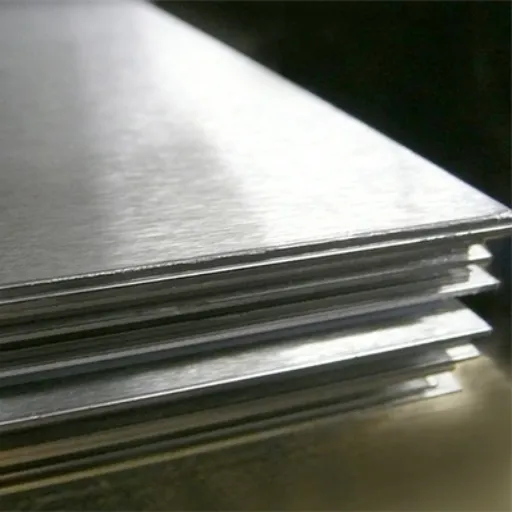Introduction to Stainless Steel
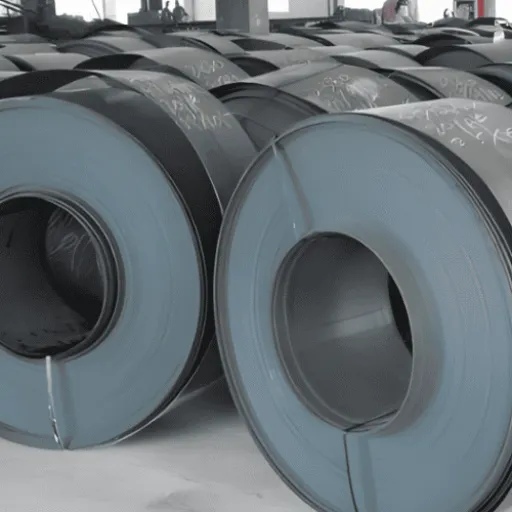
Grade 408 stainless steel is particularly designed to excel in the high-temperature service range. Its chemical composition, with a higher chromium content but lower nickel, ensures excellent resistance against oxidation while maintaining structural stability. That property combination makes it economically affordable for applications such as automotive exhaust gas systems and heat exchangers.
What Is Stainless Steel?
Stainless steel means corrosion-resistant iron alloy steel comprising chromium along with some nickel and other elements sometimes. The main characteristic of stainless steel is chromium, usually 10.5% by weight minimum. This element then reacts with oxygen in the environment to form a thin, stable oxide layer on the surface, which is called the passive layer. This passive layer is, therefore, responsible for the superior resistance to corrosion and oxidation that stainless steel has.
According to type of stainless steel, principally five groups in terms of microstructure are existente: austenitic, ferritic, martensitic, duplex, and precipitation-hardening stainless steels. Each category has its set of properties and applications. For example, austenitic steel grades 304 and 316 offer the highest corrosion resistance and are thus applied widely in the chemical processing industries and for medical equipment. Ferritic-type stainless steel such as Grade 430 is magnetic; it is ordinarily highly corrosion-resistant and relatively less costly.
Importance of Stainless Steel in Industry
Because of its extraordinary properties, such as corrosion resistance, durability, and versatility, stainless steel holds a very important place in modern-day industries. It accounts for approximately 12% of global steel production, with yearly production ranking above 56 million metric tons as of 2022, according to industry data. Because applications expose the materials to extreme environments where stainless steel holds much lower weight than others in terms of structural integrity when compared with other materials, it has all types of uses in construction, transport, health care, and energy production.
Key Industry Benefits:
- Corrosion Resistance: Primary advantage credited to chromium content (10.5% to 30%)
- Environmental Durability: Resistant to atmospheric moisture, chemical exposure, and saline conditions
- Sustainability: More than 80% of stainless steel is recycled after service life
- Marine Applications: Indispensable in marine engineering and chemical processing
Chemical Composition of Grade 408 Stainless Steel
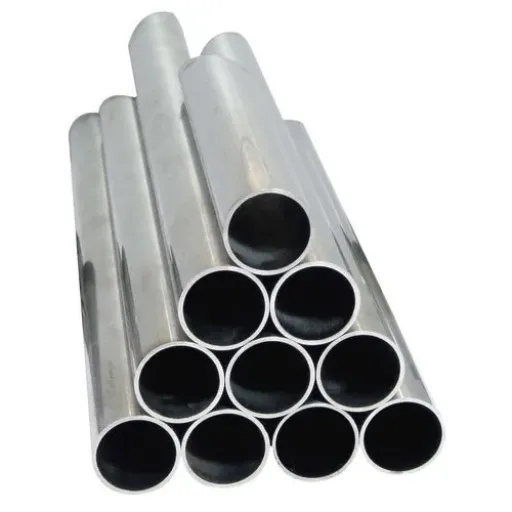
Grade 408 stainless steel is primarily iron-based, with the amount of chromium varying between 10.5% and 11.5%. In contrast, nickel is present only in trace amounts-one percent or less. This specific-grade composition affords it moderate corrosion resistance and heat resistance, ideally suited for use in heat exchangers and automotive exhaust systems.
Elements and Their Functions in Grade 408 Stainless Steel
Grade 408 stainless steel is a closely balanced combination of elements, each playing an essential role in defining the mechanical properties, corrosion resistance, and thermal stability of this stainless steel grade. The following list offers a detailed explanation of the key elements in this alloy and their functions:
| Element | Percentage | Function |
|---|---|---|
| Iron (Fe) | Base Metal | Provides structural integrity and stable matrix for other alloying elements |
| Chromium (Cr) | 10.5% – 11.5% | Primary corrosion resistance element; forms oxide film for durability up to 1400°F (760°C) |
| Nickel (Ni) | ≤ 1.0% | Improves toughness and chemical resistance; lower content reduces cost |
| Carbon (C) | 0.05% – 0.10% | Enhances hardness and tensile strength; controlled to prevent carbide precipitation |
| Manganese (Mn) | ≤ 1.0% | Improves workability, acts as deoxidizer, enhances toughness |
Impacts of Composition on Properties
Chromium Content Impact
Chromium forms a passive surface oxide layer. Higher chromium content grades like Grade 316 (16-18%) show superior oxidation and acid resistance compared to Grade 408 (11-12%). Every 1% chromium increase reduces corrosion rate by 20% under similar conditions.
Nickel Content Impact
Increased nickel provides strength with low-temperature ductility. Grade 316 (10-14% nickel) vs Grade 408 (minimal nickel) makes 316 suitable for marine applications requiring stress corrosion cracking resistance.
Molybdenum Content Impact
Molybdenum resists pitting and crevice corrosion in chloride environments. Grade 316 contains 2-3% molybdenum, reducing pitting corrosion rates by 50% in chloride solutions compared to grades without molybdenum like Grade 408.
Key Properties of Grade 408 Stainless Steel
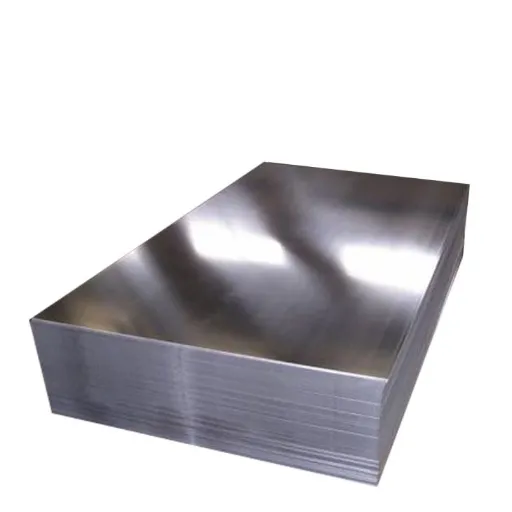
The anticorrosive properties and corrosion resistance are the main properties of Grade 408 stainless steel. High heat resistance and oxidizing properties make it particularly suited for high-temperature applications. It resists corrosion to a considerable degree due to the chromium content if comparatively less than higher-grade alloys like 316.
Strength and Hardness of Grade 408 Stainless Steel
Grade 408 stainless steel is a heat-resistant ferritic alloy with a considerable balance of mechanical strength and durability at elevated temperatures. It has a tensile strength ranging from approximately 370 MPa to 580 MPa and a yield strength in the vicinity of 200 MPa. In this state, it is structurally sufficient for high-temperature environs. Brinell hardness for Grade 408 stainless steel should hover between 200 and 250 HB, allowing adequate resistance against the grain wear resulting from mechanical deformation.
Grade 408 Mechanical Properties Summary
- Tensile Strength: 370-580 MPa
- Yield Strength: ~200 MPa
- Brinell Hardness: 200-250 HB
- Heat Resistance: Up to 1500°F (815°C)
Grade 408, with a chemical constitution with 10.5-11.5% chromium and balanced amounts of silicon and manganese, imparts scaling resistance to temperatures up to 1500°F (815°C). This subclass has been employed for applications such as heat exchangers, gas turbines, and other industrial operations requiring elevated heat resistance. It presents a value alternative realization for defined temperature ranges against the highly alloyed grades.
Corrosion Resistance
The resistance to corrosion is an extremely vital property in those materials that are used in industrial and aerospace applications wherein they are exposed to moisture, corrosive chemicals, and varying temperatures. In general, alloys for these applications are developed to resist oxidation and other forms of corrosion, therefore keeping them in service for longer periods and serving their purposes to the best of their ability.
It has been found by recent research that additives such as chromium, nickel, and molybdenum greatly improve the corrosion resistance of high-performance alloys. For example, alloys with between 18 and 20% chromium and 8 to 12% nickel, such as Type 316 stainless steel, show good resistance to general and pitting corrosion, especially in chlorine-containing environments. It has been reported that while 316 stainless steel is in seawater, the corrosion rate could reach as low as 0.02 mm/yr, thus rendering it suitable for marine environments.
The Distinct Advantages of Grade 408 Compared To Other Types of Stainless Steel
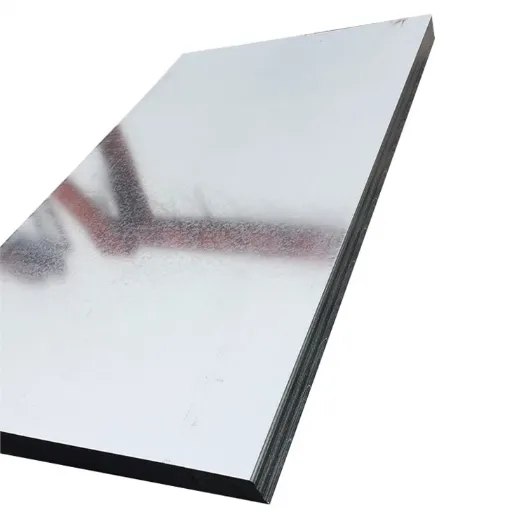
Grade 408 stainless steel has distinct advantages over other types given that it resists oxidation by heat to a very satisfactory degree and that it is cheaper. In an environment where thermal stability is paramount, it is used instead of other stainless steels requiring heat-resistant applications. Furthermore, it is this balanced composition giving an edge in manufacturing compared to others without compromising corrosion resistance or structural integrity.
High Strength and Hardness
Martensitic stainless steels are a grade of high-strength and hard steels obtained by exacting alloying and heat treatment. Grade 408, being a medium chromium steel with its chromium content usually in the range of 11.5%, has enough corrosion resistance but still can be very well hardened. The strength of Grade 408 comes mainly due to its martensitic structure, which is formed during heat treatment when cooling is very fast, also known as quenching. Since the steel develops a microstructure of high dislocation density and low ductility, this condition favors higher wear resistance and higher tensile strength.
Compared to other grades, whether austenitic or ferritic stainless steel, it essentially has a better mechanical behavior. For instance, its UTS is generally between 485 and 620 MPa, depending on the heat treatment given, which is higher than for many other alternative grades in this category. Its hardness may reach 40 HRC upon quenching and tempering, wherein the grade 408 steel finds its application in situations that demand resisting deformation under heavy mechanical loads or abrasive conditions.
Corrosion Resistance Comparisons with Ferritic and Martensitic Grades
Grade 408 remains moderately resistant to corrosion when compared to other stainless steel types, especially the ferritic and martensitic grades. In contrast, ferritic grades, including, but not limited, to Grade 430 resist stress corrosion cracking and pitting well; still, their lower chromium content (usually ranging between 16 and 18%) might reduce their resistance against highly aggressive environments. Martensitic grades such as Grade 410 also show high strength and wear resistance but generally compromise corrosion resistance owing to their lower chromium content (generally between 12 and 14%) and higher carbon content.
| Grade | Chromium Content | CPT (°C) | Characteristics |
|---|---|---|---|
| Grade 408 | 10.5-11.5% | 20-25°C | Balanced strength and corrosion resistance |
| Grade 430 | 16-18% | 30-35°C | Good stress corrosion cracking resistance |
| Grade 410 | 12-14% | 15-20°C | High strength, compromised corrosion resistance |
| Grade 316 | 16-18% | >50°C | Superior chloride resistance with molybdenum |
Grade 408 is in a balancing act. The superior chromic content as well as other alloying elements permit it to better withstand the general atmospheric conditions and mild chemical exposure than ordinary martensitic steels. However, compared to austenitic grades such as 304 or 316, which considerably enhance chromium and nickel contents, it is less resistant to chloride-induced pitting. For a better comparison, laboratory tests under standardized chloride environment indicate that Grade 408 has a critical pitting temperature (CPT) of around 20-25 °C, while Grade 316 achieves a CPT of over 50 °C under identical conditions.
Reference Sources
-
Marlin Wire – Common Types of Stainless Steel
This article explains that Grade 408 stainless steel is highly resistant to heat but less resistant to corrosion, containing 8% nickel and 11% chromium.
Read more here -
MetalsCut4U – Types of Stainless Steel
This source highlights that Grade 408 stainless steel, with added chromium, is commonly used in automotive trim and decorative applications.
Read more here
Frequently Asked Questions (FAQs)
Which are stainless steel types related to grade 408?
Grade 408 is a martensitic stainless steel that is known for strength and hardness. It will be compared with some other grades such as 410 and 420 that possess similar properties but may differ in corrosion resistance and hardness. Getting to know these types of stainless steels would aid in selecting knives for particular tasks.
How do grade 408 and duplex stainless steels stand against each other in comparison?
Being a martensitic stainless steel, grade 408 will generally show low corrosion resistance when considered against duplex stainless steels that combine good features from both ferritic and austenitic types. Duplex stainless steels such as 316L possess increased strength and resistance to pitting and crevice corrosion so that they may find service in more aggressive conditions.
What are some food-processing applications of grade 408?
Grade 408 is embraced in food processing applications with good corrosion resistance and can sustain high temperatures. It is commonly used for components such as furnace parts and equipment that require strength and resistance to mildly corrosive media encountered in food processing applications.
What about precipitation-hardening stainless steels, and what is their relation to grade 408?
Precipitation-hardening stainless steels, such as grades 17-4 and 15-5, are high-strength and hard grades obtained from heat treatment. One may consider such steels in applications where higher mechanical properties and corrosion resistance are needed than those offered by grade 408, such as aerospace and chemical processing.
What significance does the added molybdenum in grades 316 and 317 have?
The presence of molybdenum increases stainless steel corrosion resistance in chloride environments. Grade 408 is without molybdenum, restricting its serviceability in severe corrosive environments, thus putting into emphasize the selection of materials on the basis of the environmental conditions.
How does grade 408 compare in terms of corrosion resistance to grade 440?
It exhibits the highest hardness with perhaps somewhat just wear resistance and is the grade mostly used to make cutlery and surgical instruments. Nonetheless, it may not resist corrosion quite as well as 408 in certain conditions. Knowing these differences is essential in the selection of materials for use where strength coupled with corrosion resistance is needed.
Conclusion
Grade 408 stainless steel represents an excellent balance between performance and cost-effectiveness in high-temperature applications. Its unique composition makes it ideal for automotive exhaust systems, heat exchangers, and other industrial applications requiring moderate corrosion resistance with superior thermal stability. Understanding its properties and limitations is crucial for materials engineers and manufacturers seeking optimal solutions for their specific applications.

